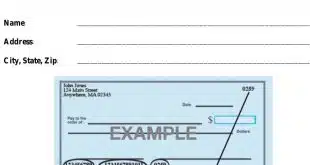The crucial role in-app payment plays in mobile-wallet usage emerged in high relief Monday in a report showing that almost one-third of all Apple Pay credit card transactions made in the last five months by surveyed consumers occurred within a merchant app rather than in a store.
Over the same period, two-thirds of Apple Pay users made at least one in-app credit card payment using the service, the report noted. Some 833 U.S. Apple Pay users were surveyed for the report, the latest in a series on Apple Pay usage issued by Phoenix Marketing International, a Rhinebeck, N.Y.-based market-research firm that has followed Apple Inc.’s mobile-payment service since its U.S. introduction 15 months ago.
The importance of in-app usage lies in the fact that relatively few places have point-of-sale gear with activated near-field communication (NFC) capability. The short-range NFC protocol allows mobile wallets like Apple Pay to link to POS terminals for in-store transactions. The ongoing rollout of terminals capable of reading EMV chip cards has increased the installed base of NFC devices, since nearly all EMV terminals come equipped for NFC, but it remains questionable how many merchants have turned on the NFC feature. Phoenix estimates between 1 million and 1.2 million locations now accept NFC payments, with growth of about 100,000 locations each month. But between 400,000 and 600,000 of the current base are vending machines, the firm figures.
“The push toward enabling in-app mobile wallet transactions is critical to building volume in a nascent market where the number of acceptance locations is relatively small (but growing) and the incidence of reported friction at the point-of-sale is high,” said Greg Weed, director of card research at Phoenix Marketing, in a statement.
The top acceptor of in-app payments on Apple Pay is the company’s own Apple Store, with 43% of those reporting an in-app purchase having used the service there. Target (36%) and Nike (29%) rank second and third.
While 67% reported having made an in-app purchase with Apple Pay, 91% did so in a store. The top brand for point-of-sale usage is, again, Apple itself, at 42% of users. But a close number-two is McDonald’s, at 41%. The only other eatery in the Phoenix ranking is Panera, at 24%. Ranking third after McDonald’s is Macy’s, at 36%.
Still, Phoenix’s researchers pointed to continuing weak activity overall for Apple Pay, as measured by frequency of usage. No brand commanded a minimum of once-a-month usage over the past five months from a majority of credit card-wielding Apple Pay users in its stores or on its app. Indeed, none exceeded 40%, with McDonald’s coning closest at 38%.
“The underlying problem of usage frequency remains pre-eminent for both in-store and in-app purchases,” said Leon Majors, a senior vice president at Phoenix, in a statement. Speaking to Digital Transactions News, Majors blamed the problem on factors ranging from consumer uncertainty about where they can use Apple Pay to cashier confusion in stores that are advertised as taking it. “We are way away from saying, ‘I’m going to make 80 purchases this month and do all of them on Apple Pay,’” he says.
While the Phoenix study excluded debit cards, both Weed and Majors say this had little if any impact on the results. “The most likely payment card to link to Apple Pay is a credit card, by far,” says Weed.




